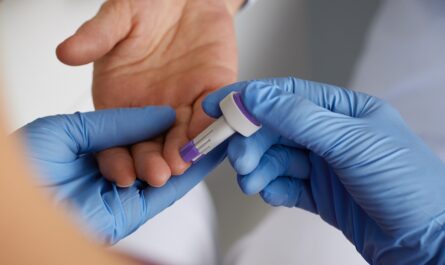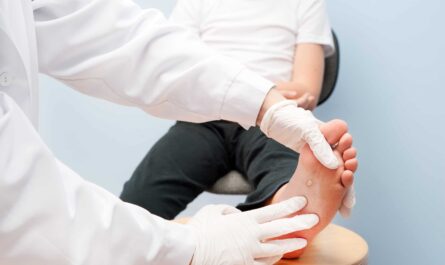Biofilms are densely packed communities of microorganisms, such as bacteria and fungi, that adhere to surfaces within a self-produced extracellular matrix of polymers. When biofilms form on the surfaces of chronic wounds, they can prevent healing by protecting bacteria from antibiotics and the host immune system. The protective matrix also allows for continuous regeneration and spreading of bacterial cells from the biofilm. As a result, biofilm-infected wounds are prone to chronic inflammation and frequently become recurrent following treatment.
Conventional Approaches and their Limitations
Traditional wound dressings and topical antibiotics try to eliminate bacteria and debris from chronic wounds. However, they often fail against biofilm infections due to their inability to penetrate the protective extracellular matrix. Even systemic Anti-Biofilm have limited effectiveness as bacteria within biofilms have significantly reduced metabolic rates, making them highly tolerant to antibiotic treatment. This resistance has led to an ongoing challenge in managing biofilm-infected wounds.
Disrupting and Preventing Biofilm Formation
A promising new approach utilizes wound dressings containing naturally-derived compounds that directly target and disrupt existing biofilms or prevent their formation. Some of these innovative dressings are:
Manuka honey dressings: Manuka honey possesses powerful antibacterial and antibiofilm properties due to its high concentration of methylglyoxal. It can penetrate biofilms and work both bacteriostatically and bactericidally against pathogens commonly found in chronic wounds, including MRSA.
Hyaluronic acid dressings: Hyaluronic acid stimulates growth of new tissue while degrading extracellular polymeric substances in biofilms. It promotes autolysis of existing biofilms through endogenous enzymatic pathways, helping wounds progress toward healing.
Dextran dialdehyde dressings: Dextran dialdehyde has both Anti-Biofilm and broad-spectrum antibacterial effects through disruption of bacterial cell membranes and inhibition of cell-to-cell signaling which controls biofilm formation.
Polyhexanide dressings: The antiseptic polyhexanide inhibits initial adhesion of bacteria to surfaces and prevents maturation of developing biofilms. It delivers effective antibacterial action without promoting bacterial resistance.
Helping Wounds Heal through a Holistic Approach
While targeting biofilms is crucial, an integrated approach is most likely to achieve lasting wound closure. Next-generation dressings not only disrupt biofilms through diverse modes of action but also promote wound healing in other important ways:
Maintaining a moist wound environment: Optimal moisture helps stimulate cellular processes involved in tissue repair and regeneration. Materials like hydrogels and alginates absorb exudate to keep wounds from drying out.
Absorbing excess exudate and debris: Drawing out wound fluids and slough reduces maceration of healthy tissues at wound borders while removing materials that could encourage further biofilm growth.
Stimulating cellular growth: Beyond disrupting biofilms, the dextran dressings and hyaluronic acid products described above actively recruit macrophages and keratinocytes to the wound bed through stimulation of growth factors.
Protecting the wound surface: Semi-occlusive membranes formed over wounds by dressings like hydrocolloids and honey help maintain a moist environment while providing a protective bacterial barrier and preventing trauma from external contamination.
Reducing pain and increasing patient comfort: Softer, more flexible dressings adhere well to wound edges but cause minimal pain on removal, improving quality of life and encouraging patient compliance with treatment regimens.
Outcomes
Clinical studies have demonstrated that advanced anti-biofilm wound dressings promoting disruption, prevention and healing can make a real difference in outcomes for patients with refractory, biofilm-infected wounds. Compared to traditional dressings, they achieve higher biofilm and bacterial load reductions, enhance rates of granulation tissue formation, and reduce healing times. For many chronic wounds previously deemed untreatable, a true solution may at last be emerging through this holistic approach targeting the root cause of impaired healing—biofilm inhibition combined with active tissue regeneration support. As technology progresses, these dressings will likely grow even more effective at resolving some of medicine’s most challenging wound cases.
Note:
1. Source: Coherent Market Insights, Public sources, Desk research.
2. We have leveraged AI tools to mine information and compile it.



